Neuromorphic Computing and How It Will Enable Hyper-Realistic Generative AI

As the field of artificial intelligence (AI) continues to evolve, the concept of neuromorphic computing is gaining increasing attention for its potential to revolutionise the capabilities of AI systems. Based on the architecture and function of the human brain, neuromorphic computing promises to enable hyper-realistic generative AI that can mimic the complexity and nuance of human thought and behaviour. Neuromorphic computing represents a paradigm shift in how we approach artificial intelligence.
Being a futurist, the world of neuromorphic computing is an exciting area and in this article, I will explore its benefits, challenges, and the exciting possibilities it holds for the future of AI. Join me as we explore this cutting-edge technology and its potential to reshape the digital landscape as we know it.
What Is Neuromorphic Computing?
At its core, neuromorphic computing is an approach to artificial intelligence that seeks to mimic the architecture and function of the human brain. This means designing AI systems capable of learning and adapting in a more similar way to human cognition than traditional AI algorithms.
The term "neuromorphic" comes from the Greek words "neuron" (meaning nerve cell) and "morphe" (meaning form). In the context of computing, it refers to the use of electronic circuits and devices inspired by biological neurons' structure and function.
The basic building block of a neuromorphic computing system is the artificial neuron. Like biological neurons, these artificial neurons are designed to receive input signals from other neurons, process that information, and then transmit output signals to other neurons. By connecting large numbers of these artificial neurons, neuromorphic computing systems can simulate the complex patterns of activity that occur in the human brain.
One of the most exciting aspects of neuromorphic computing is its potential to enable hyper-realistic generative AI. Traditional AI systems are limited in their ability to generate new content, such as images or music, that is truly original and creative. With neuromorphic computing, however, AI systems can learn to create content that is not only original but also realistic and nuanced, capturing the complexity and subtlety of human thought and behaviour.
Of course, there are challenges to overcome in developing neuromorphic computing. The complexity of the human brain means that creating an AI system that truly mimics its function is no easy feat. There are also ethical concerns to consider, such as the potential for AI systems to become more intelligent than humans and the impact this could have on society.
Despite these challenges, the potential benefits of neuromorphic computing are too great to ignore. From healthcare to entertainment, there are numerous areas where this technology could be applied to improve our lives and enhance our experiences.
Neuromorphic computing is still a relatively new field, and much work must be done to fully realise its potential. However, the promise of more flexible, adaptable, and intelligent AI systems drives a growing interest in this technology. As researchers continue exploring the possibilities of neuromorphic computing, we will likely see increasingly sophisticated and robust AI systems capable of tasks that were once thought to be the exclusive domain of human intelligence.
Overview of Hyper-Realistic Generative AI
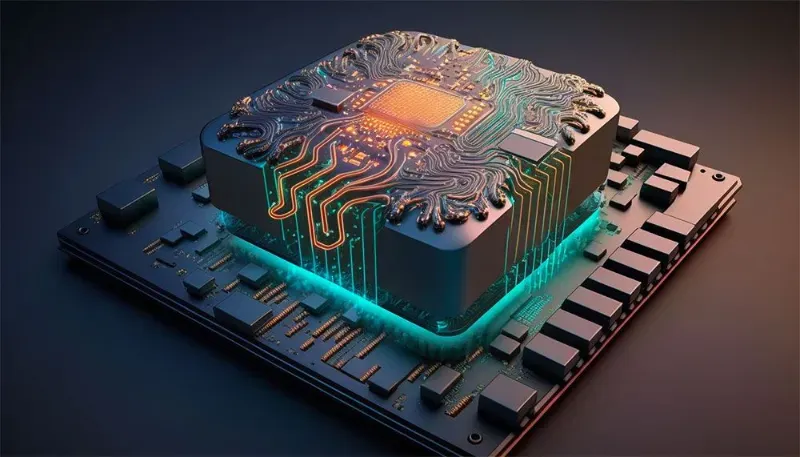
Hyper-realistic generative AI is a cutting-edge technology that enables AI systems to create content that is not only original but also incredibly realistic and nuanced. Unlike traditional AI systems, which are limited in their ability to generate new content, hyper-realistic generative AI is designed to learn from existing data and generate new content that is both realistic and creative.
Hyper-realistic generative AI has the potential to capture the complexity and subtlety of human thought and behaviour. For example, a hyper-realistic generative AI system could be trained on a dataset of human faces and generate new faces indistinguishable from real human faces. This could have applications in fields such as entertainment, where hyper-realistic generative AI could be used to create lifelike characters for movies and video games.
However, there are challenges to overcome in developing hyper-realistic generative AI. To accelerate the training of hyper-realistic generative AI models, neuromorphic computing hardware can provide a more efficient computational platform. It is also possible to develop new, more efficient algorithms for generating hyper-realistic content using the principles of neural network architecture that underlie both fields.
While many challenges remain, the potential applications of hyper-realistic generative AI are vast and varied. The technology could enhance and improve our lives, from healthcare to entertainment to marketing. We will likely see even more innovative and exciting applications of hyper-realistic generative AI in the years to come as this technology continues to evolve and improve.
Importance of Neuromorphic Computing for the Development of AI Systems
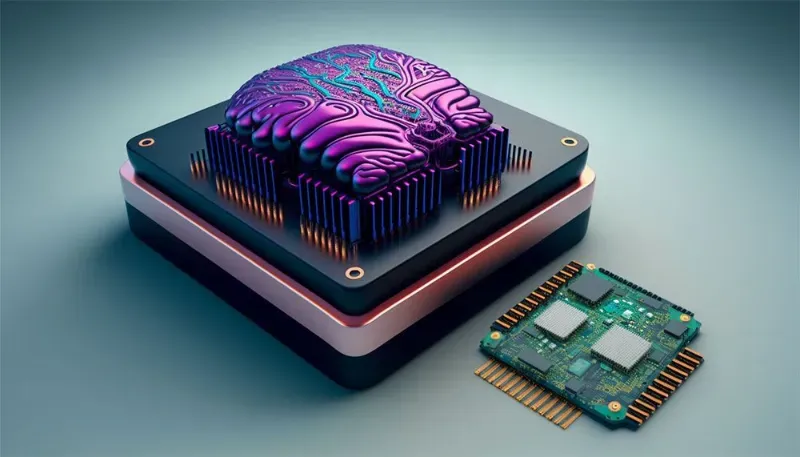
Neuromorphic computing is a crucial technology for the development of artificial intelligence systems. Based on the structure and function of biological neurons, neuromorphic computing systems can achieve a level of flexibility and adaptability unmatched by traditional AI algorithms.
Neuromorphic computing can learn and adapt in real-time. Compared to traditional AI algorithms, which require significant amounts of data to be trained on before they can be effective, neuromorphic computing systems can learn and adapt on the fly. This means they can quickly respond to changing environments and situations, making them ideal for use in robotics and self-driving cars.
Neuromorphic computing is also energy-efficient. By using electronic circuits and devices inspired by the structure and function of biological neurons, neuromorphic computing systems can potentially use less power than traditional AI systems. This could have important implications for developing AI systems deployed in resource-constrained environments, such as remote locations or space exploration missions. Most importantly, neuromorphic computing has the potential to unlock new capabilities for AI systems that were previously thought to be beyond their reach. For example, neuromorphic computing systems could be used to create AI systems capable of true creativity and artistic expression or that can learn and adapt in ways similar to human cognition.
Neuromorphic computing is also vital for developing AI systems that are more resilient to noise and errors. In neuromorphic computing systems, information is processed by distributed networks of neurons that work together to overcome errors and noise. They are, therefore, ideal for use in applications such as speech recognition, where noisy environments can make traditional AI algorithms less effective.
Moreover, neuromorphic computing provides privacy and security advantages. It is possible to design neuromorphic computing systems to process data locally on the device, unlike traditional AI algorithms, which rely on centralised data processing and storage. For example, biometric information and personal health data can be kept securely and privately.
AI systems that are more explainable and transparent can be developed by harnessing the power of neuromorphic computing. Neuromorphic computing systems could help researchers and developers to better understand how AI systems work and to identify areas for improvement or further development.
As the field of neuromorphic computing continues to evolve and mature, we will likely see increasingly sophisticated and powerful AI systems capable of tasks that were once thought impossible. Neuromorphic computing has vast potential applications—including in the developing world—and is poised to play a central role in our AI-driven future.
Neuromorphic Computing vs. Traditional Computing

Regarding the development of artificial intelligence systems, neuromorphic computing represents a fundamentally different approach than traditional computing. While traditional computing relies on algorithms and logic to process data, neuromorphic computing is inspired by the structure and function of biological neurons. It aims to create systems that can learn and adapt in ways that are similar to human cognition.
Traditional computers use binary logic, but neuromorphic chips can perform complex tasks like recognising objects and making decisions based on sensory input. Neural networks are composed of layers of interconnected neurons that process information by passing signals between each other through synapses (or connections). Each layer consists of thousands or millions of neurons arranged in a grid with different types of cells: input, output, and hidden layers. The input layer receives data from the outside world; for example, it might receive an image or sound wave as input into the system. The output layer produces results based on what has been learned from previous experience; for example, if we want our neural network to recognise faces, we could feed it pictures until it eventually becomes good at recognising them.
Neuromorphic computing differs from traditional computing in the way that they process information. Traditional computing uses a centralised processing unit (CPU) to execute instructions and perform calculations, whereas neuromorphic computing uses a distributed network of neurons to process information in parallel.
This parallel processing approach is critical to neuromorphic computing, allowing the system to process information more quickly and efficiently than traditional computing. In addition, the distributed nature of neuromorphic computing means it is more resilient to errors and noise in the data, as the system can work together to overcome these challenges.
Adaptability and learning are other key differences between neuromorphic computing and traditional computing. For traditional computing to be effective, it must be trained on a large amount of data, whereas neuromorphic computing learns and adapts in real time, just like the human brain.
This ability to learn and adapt in real time is a significant advantage of neuromorphic computing, as it enables the system to respond to changing environments and situations quickly. Also, this real-time learning and adaptation mean that neuromorphic computing systems can achieve a level of flexibility and adaptability that is unmatched by traditional computing.
Enabling Hyper-Realistic Generative AI
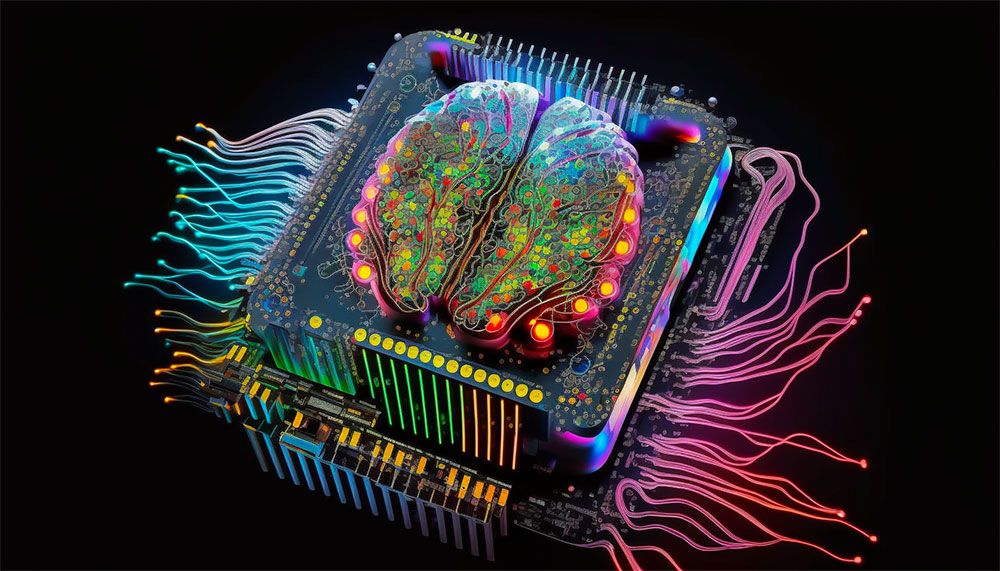
Hyper-realistic generative AI has the potential to revolutionise how we interact with digital content. We will explore the key technologies and techniques driving its development, as well as its potential applications across various industries.
Neuromorphic Computing Applications and Companies Creating Promising Hyper-Realistic Generative AI
In developing AI models that can create images, videos, and other media that are virtually indistinguishable from real-world content, researchers and developers are exploring new applications that were once the stuff of science fiction. Let's look at some of the most promising neuromorphic computing applications currently in development and explore how they could transform the way we live, work, and play.
BrainChip
One company at the forefront of this innovation is the Australian startup, BrainChip, which has developed a range of neuromorphic computing hardware and software solutions for edge devices.
At the heart of BrainChip's technology is the Akida Neuromorphic System-on-Chip (NSoC), which is specifically designed to perform pattern recognition and sensory processing tasks with high efficiency and low power consumption. This makes it an ideal solution for edge devices such as surveillance cameras and drones, which require advanced processing capabilities but have limited power and computational resources.
The Akida NSoC is based on a unique architecture that provides a fully-digital, portable solution, allowing it to perform complex computations while maintaining low power consumption. It also incorporates a spiking neural network (SNN) architecture, modelled on the behaviour of biological neurons and synapses.
BrainChip's technology has a range of potential applications in industries such as security and surveillance, as well as in autonomous vehicles and robotics. As a result of BrainChip's ability to perform advanced processing tasks with high efficiency and low power consumption, next-generation computing solutions are becoming more intelligent, efficient, and responsive.
Intel
Intel is one of the leading companies in this field, with their Loihi chip being a prime example of neuromorphic hardware.
Loihi is a neuromorphic chip designed to mimic the human brain's neural networks. It uses a spiking neural network (SNN) architecture, inspired by how neurons in the brain communicate with each other. This allows Loihi to perform tasks such as pattern recognition, data classification, and object detection with high efficiency and low power consumption.
As a real-time learning tool, Loihi can adapt to new tasks instantly. This is achieved through synaptic plasticity, which allows the chip to modify its architecture based on feedback from the environment. This makes Loihi ideal for applications that require real-time processing and decision-making, such as autonomous vehicles, robotics, and industrial automation.
Intel has used Loihi in various research projects and applications, including image recognition, speech recognition, and natural language processing. The chip has also been used in collaborations with universities and research institutions to explore the potential of neuromorphic computing in fields such as neuroscience, psychology, and cognitive science.
SynSense
Another promising player in the field is SynSense, a Zurich, Switzerland startup that specialises in developing neuromorphic computing chips.
SynSense's technology is designed to be highly efficient and scalable, making it suitable for a wide range of use cases, from edge devices to data centres. Their chips are based on a unique architecture that combines digital and analog processing elements, allowing them to perform complex computations with low power consumption.
SynSense's neuromorphic computing chips offer the benefit of learning and adapting to new tasks. Spiking neural networks (SNNs) simulate the behaviour of synapses and neurons in the brain. This allows the chips to perform tasks such as pattern recognition, object detection, and data classification with high accuracy and efficiency.
This startup’s technology has many potential applications in healthcare, finance, and transportation industries. For example, their chips could be used in medical devices to analyse patient data in real time, or in autonomous vehicles to enable advanced object detection and decision-making capabilities.
As a startup, SynSense is at the forefront of the neuromorphic computing industry, driving the development of next-generation computing solutions that are more intelligent, efficient, and responsive than ever before. With their innovative technology and focus on scalability and efficiency, they are well-positioned to play a key role in the future of machine learning and AI.
The Potential Impact of Hyper-Realistic Generative AI on Various Industries
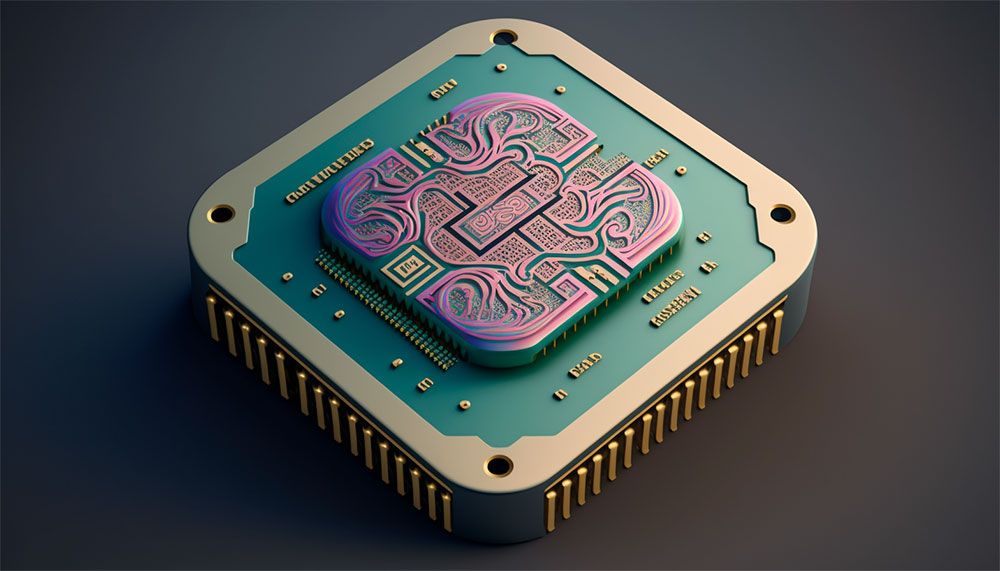
The entertainment industry will be one of the most affected by hyper-realistic generative AI. This technology can be used to create hyper-realistic special effects and computer-generated imagery (CGI) in movies and television shows, making it possible to produce visually stunning and immersive experiences for viewers.
In that sense, neuromorphic computing can also be used to increase the realism of virtual reality experiences by allowing the virtual environment to respond to the user's movements and actions in a more natural way. For example, researchers at the University of Zurich have developed a neuromorphic camera that can track in real-time the movement of objects in a virtual environment, making it more like the real world.
Advertising and marketing are also industries that could benefit from hyper-realistic generative AI. This technology can be used to create highly convincing and personalised advertisements that are targeted to specific audiences. As a result, companies can create more effective marketing campaigns that can better capture the attention of their target customers.
In the field of healthcare, hyper-realistic generative AI has the potential to revolutionise medical imaging. This technology can create highly detailed and accurate 3D models of organs and tissues, allowing doctors to diagnose better and treat a wide range of medical conditions.
Admetsys, a Boston-based start-up, has created an “artificial pancreas” chip, which is smaller than a thumbnail and can automate the process of administering insulin or glucose for critically ill diabetes patients. The chip can constantly monitor blood sugar levels in real-time using an AI algorithm that triggers the software to administer the required drug. The solution would replace the current manual intervention by nurses and help medical professionals focus on harder tasks. The technology can save a hospital around $8,000 per patient and reduce the amount of time that they would stay in intensive care.
In the world of fashion, hyper-realistic generative AI can be used to create virtual clothing and accessories that are indistinguishable from physical garments. This technology could make it easier for fashion designers to create and test new designs more quickly and cost-effectively while reducing waste and environmental impact.
Likewise, hyper-realistic generative AI is used in architecture and design to create virtual environments and buildings that can be explored in 3D. This technology is beneficial for architects and designers who need to visualise and test their designs before they are built.
The gaming industry also uses hyper-realistic generative AI to create more immersive and realistic video games. With this technology, it is possible to create realistic environments, characters, and special effects that enhance the gaming experience for players. The use of neuromorphic computing can enhance the realism of video game graphics by allowing them to respond to player actions in a more natural and organic way. As an example, the game "Spore" uses neural networks to generate realistic creature animations.
Last but not least, hyper-realistic generative AI is used in education to create virtual training environments for a wide range of industries. For example, airline pilots can now train in virtual cockpits that are indistinguishable from real aircraft, allowing them to practice emergency procedures and other critical skills in a safe and controlled environment.
In general, hyper-realistic generative AI has the potential to have a significant impact on various industries. As this technology continues to evolve, it will be necessary for businesses and individuals to stay informed about its capabilities and potential applications to stay ahead of the curve.
The Future of Hyper-Realistic Generative AI in Organisations
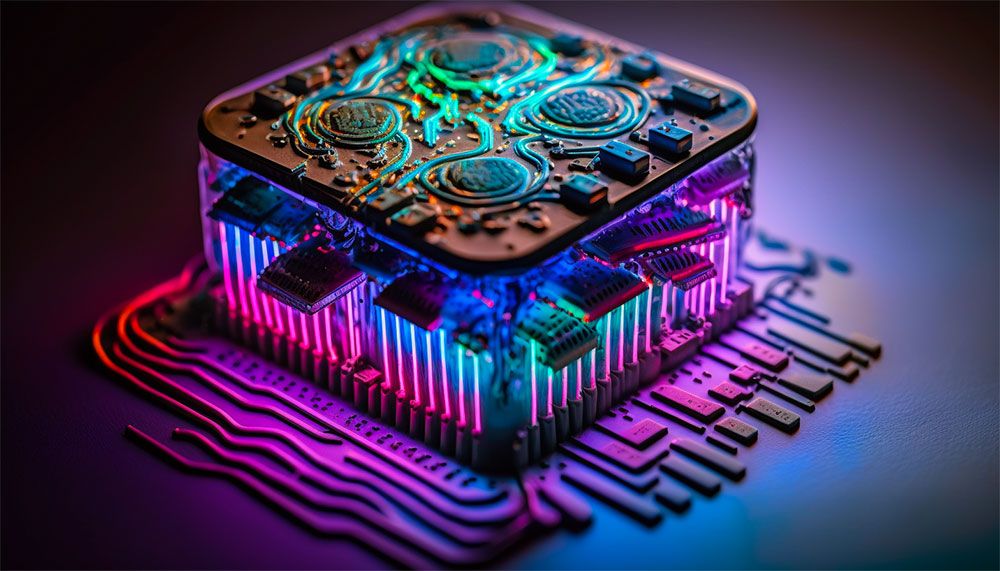
Neuromorphic computing has the potential to be a game-changer in many different areas of society, and its consequences could be far-reaching and complex. As a technology, neuromorphic computing has the potential to significantly advance the field of AI by creating more powerful and efficient models that can process information in ways that resemble the human brain. This could lead to significant breakthroughs in natural language processing, image and speech recognition, and decision-making.
Also, the highly efficient nature of neuromorphic computing systems could lead to significant energy savings and improved performance in various applications, from data centres to mobile devices. This could positively impact the environment and the economy, as well as open up new possibilities for innovation and progress.
However, there are also important ethical and social implications to consider. As neuromorphic computing becomes more advanced and more widely used, there are concerns about the potential for AI to replace human workers, the use of AI for surveillance and control, and the impact of AI on privacy and personal autonomy. It will be necessary to carefully consider these issues and develop strategies for mitigating any negative consequences.
In short, the consequences of neuromorphic computing in the future will depend on how it is developed and deployed, and it will be essential to balance the potential benefits with the potential risks as we move forward. While there are certainly challenges and uncertainties to be navigated, neuromorphic computing has the potential to be a powerful tool for positive change and progress in the years to come.
Challenges Facing Neuromorphic Computing and Hyper-Realistic Generative AI
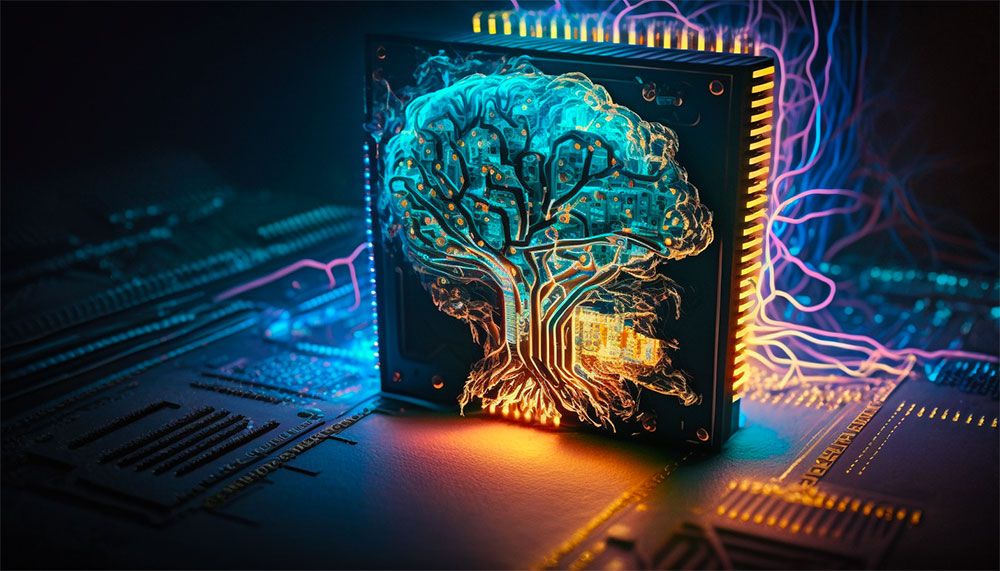
As with any new technology, significant challenges must be addressed to fully realise its potential. In this section, we will explore some of the key challenges facing neuromorphic computing and hyper-realistic generative AI, including data privacy, ethical concerns, and the need for regulatory frameworks to ensure these technologies are used in responsible and beneficial ways.
Technical Challenges in Developing Neuromorphic Computing Systems
Developing neuromorphic computing systems is a complex and challenging task, requiring significant expertise and innovation. One of the primary technical challenges in this field is designing and building systems that can accurately simulate the behaviour of biological neurons and synapses. This requires a deep understanding of the underlying principles of neural networks and the ability to translate this knowledge into practical technological solutions.
The scalability of neuromorphic computing systems poses another technical challenge. While current systems can simulate small-scale neural networks, scaling up these systems to simulate more extensive and more complex networks remains a significant challenge. This is partly due to the fact that the power requirements for neuromorphic computing systems are much higher than for traditional computing systems, making it easier to scale up these systems with significant investment in energy-efficient technologies.
A related challenge is a need for specialised hardware and software to support neuromorphic computing systems. While traditional computing systems use standardised hardware and software platforms, neuromorphic computing systems require specialised components and software tailored to neural networks' specific needs. This can make developing and maintaining these systems easier and more affordable, particularly for smaller organisations with limited resources.
Recent advances in neuromorphic computing and related fields have shown promise in overcoming some of these technical barriers. For example, new approaches to hardware design and energy-efficient computing have helped to reduce the power requirements of neuromorphic computing systems, while advances in software development have made it easier to build and program these systems. The development of neuromorphic computing systems that are scalable, efficient, and effective is likely to progress as these technologies continue to develop.
Ethical Challenges Associated With Hyper-Realistic Generative AI
The primary ethical concern associated with this technology is the potential for misuse or unintended consequences. For example, hyper-realistic generative AI could be used to create convincing fake videos or images which could be used to spread disinformation or propaganda. The implications are significant for free speech, democracy, and media trust.
In fact, there have been reports of the Venezuelan government using deepfake technology to spread false news in English to international audiences. Deepfakes are videos or images created using artificial intelligence that can manipulate and alter the original footage or image to make it appear as though someone said or did something that they did not.
The Venezuelan government has been accused of using deepfakes to create false news stories and videos that they then spread through social media in an attempt to influence public opinion. These deepfakes have reportedly been used to spread misinformation about opposition politicians and to create false news stories about the country's economy and political situation.
Some experts have warned that the use of deepfakes in this way could have serious consequences for democratic societies, as it becomes increasingly difficult to distinguish between real and fake news. It is also concerning because it can be used to spread propaganda and manipulate public opinion.
It is important for individuals to be vigilant and skeptical of news they see on social media and to verify the authenticity of the sources and information. It is also important for governments and social media platforms to take steps to prevent the spread of false information, including deepfakes, and to promote media literacy to help people better understand and critically evaluate the information they encounter online.
As a consequence of hyper-realistic generative AI, there is also the potential for bias and discrimination. As with any machine learning system, these systems are only as unbiased as the data they are trained on. If the training data is biased or discriminatory in any way, this bias can be amplified by the AI system, leading to unfair or discriminatory outcomes. This can be particularly problematic in hiring, lending, and criminal justice areas, where biased AI systems could perpetuate or even exacerbate existing inequalities.
A related ethical challenge is the issue of transparency and accountability. Because hyper-realistic generative AI systems are often complex and opaque, it can be challenging to understand how they are making decisions or to hold them accountable for any harm caused. This can make it challenging to identify and correct any biases or errors in the system and make it difficult to ensure that these systems are being used responsibly and ethically.
A few other important ethical concerns related to hyper-realistic generative AI are worth mentioning. One of these concerns is the potential for hyper-realistic generative AI to be used in cyberbullying or harassment. For example, these systems could be used to create fake images or videos of individuals that could be used to embarrass or humiliate them. This has significant implications for privacy and online safety, particularly for vulnerable populations such as children and teenagers.
Finally, there is concern about the potential impact of hyper-realistic generative AI on the job market. As these systems become more sophisticated and capable, there is a risk that they could replace human workers in certain industries, leading to job loss and economic disruption. This could have significant social and economic implications, particularly if these job losses are concentrated in particular regions or communities.
These ethical concerns highlight the need to carefully consider and regulate hyper-realistic generative AI. While this technology offers many exciting possibilities, it also poses significant risks and challenges that must be addressed to ensure that it is being used in a responsible and beneficial way.
Current Efforts to Address These Challenges
There are many ongoing efforts to address the ethical challenges associated with hyper-realistic generative AI. A range of stakeholders, including researchers, policymakers, and industry leaders is leading these efforts.
An important area of focus is the development of more transparent and explainable AI systems. The goal is to develop AI algorithms and models that humans can understand and interpret more easily. In this way, it becomes easier to identify and address any biases or errors in the system and to ensure that these systems are being used ethically and responsibly. For instance, researchers are exploring ways to develop AI systems that can provide explanations for their decisions or that can be audited to ensure that they are not exhibiting any unwanted biases.
It is also important to develop ethical frameworks and guidelines for developing and using AI systems. This involves establishing principles and best practices for AI's responsible and ethical use and ensuring that these principles are reflected in industry standards and regulations. As an example, the IEEE Global Initiative on Ethics of Autonomous and Intelligent Systems has developed a set of ethical guidelines for developing and using AI systems, including principles such as transparency, accountability, and fairness.
There is also growing interest in the role of interdisciplinary collaboration in addressing the ethical challenges associated with hyper-realistic generative AI. This involves bringing together experts from various disciplines, including computer science, ethics, law, and social science, to work collaboratively on these issues. Such interdisciplinary collaboration ensures that the ethical implications of AI are being fully considered and addressed and helps identify potential unintended consequences that may arise from these systems.
Final Thoughts
If we generate neural networks to imitate a brain's billions of neurons, synapses, and axons—and these networks happen to be fabricated on silicon instead of carbon—does that change the definition of intelligence? Or are we just merely copying an already existing design? I certainly hope that neuromorphic computing will enable advanced cognitive systems, but we are far from there yet. However, given the rate at which technology is progressing, we could see some fascinating developments coming out of the neuromorphic computing realm soon.
So far, researchers have only started scratching the surface of what neuromorphic computing can do. In the coming years, we will likely see more hyper-realistic AI created that is capable of processing information in real time. This could be combined with existing technologies to create more realistic games, realistic avatars and other characters, realistic robotic models, and even more advanced self-driving cars. We will also likely see major breakthroughs in machine learning, where AI can learn on its own with efficiency and without pre-programmed instruction sets. In other words, neuromorphic computing has the potential to revolutionise AI—and it might happen sooner than we realise.
Images: Midjourney





